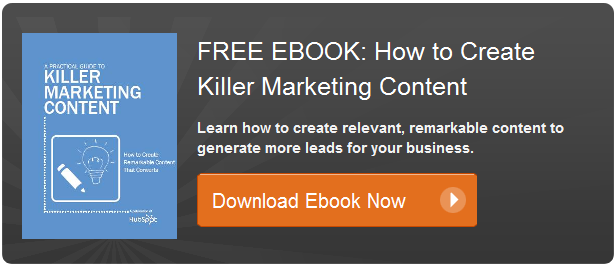How to Craft the Right Questions for Your Next Marketing Survey
This is an excerpt from our new ebook, The Ultimate Guide to Using Surveys in Your Marketing, created in collaboration with SurveyMonkey. To learn all about launching successful marketing surveys, download your free copy today.
As they say on Family Feud, “Survey says …” Well, when it comes to leveraging surveys in marketing, they can say quite a lot of helpful things.
Surveys are strong feedback mechanisms that can help marketers draw valuable insights from their communities — which can then be used to achieve better marketing results. But when building online surveys, it’s important for marketers to understand that the way you structure and pose your survey questions is critical to the overall survey’s success.
The formatting, design, clarity, and wording of your questions can have a huge impact on both the response rate and the accuracy of your survey results, so getting them right is key to a successful marketing survey. Here are some general best practices and recommendations every marketer should follow when it comes to building effective marketing surveys.
1) Make it Flow
Make sure your survey questions flow in a logical order. Begin with a brief introduction that motivates survey respondents to complete the survey. Start with questions that are broad, and then continue with those narrower in scope. For instance, if we were to evaluate how useful this blog post is to our audience in comparison to other blog posts, we might start with a question like, “How often do you read HubSpot’s blog?” Then we’d get into more nitty-gritty, specific questions.
Collect demographic data and ask any sensitive questions at the end of your survey, unless you are using that information to filter survey participants. Also, if you are asking for contact information, request that information last.
2) Keep it Short & Simple
 Keep your questions simple, straightforward, and concise. This will make it easier for your survey respondents to understand exactly what you’re asking. It will also make it much easier for you to accurately analyze your data.
Keep your questions simple, straightforward, and concise. This will make it easier for your survey respondents to understand exactly what you’re asking. It will also make it much easier for you to accurately analyze your data.
Keep it simple in terms of survey length is important, too. The folks over at SurveyMonkey have found that the more questions a survey has, the lower its completion rate. For each extra 35 questions, the completion rate goes down by a whole percentage point. So, don’t ask too many questions!
3) Avoid Double-Barreled Questions
Did you enjoy our ebook about surveys that you found on our website? This is an example of a double-barreled question. It has two parts to it: 1) Did you enjoy our ebook? and 2) Did you find the ebook on our website? This means that a respondent could answer positively to one part and negatively to the other. It’s also wicked confusing.
Such double-barreled questions don’t belong in surveys. Instead, go with closed-ended or open-ended survey questions. Closed-ended questions prompt specific choices (e.g., yes or no). These types of questions are great for collating and analytical purposes, which is why multiple choice questions are often a great choice for marketing surveys. Open-ended questions are effective at providing qualitative information and insights. These should be use when you want survey respondents to describe something in their own, unbiased words.
4) Randomize the Order of Questions
But you just told me earlier to “make it flow!” Stay with us here. While a general, logical, overall flow is important, the order that specific questions appear in your survey can directly impact the responses you gather. Priming is the reason behind this dynamic: respondents are primed to think about one issue while answering the subsequent question.
 Another reason the order in which you pose survey questions matters is that survey takers have a tendency to want to appear consistent in their responses. For instance, if you ask a person to put together a controversial event announcement, then ask how much they enjoy event marketing, they may be inclined to rate their interest lower if they struggled to write it.
Another reason the order in which you pose survey questions matters is that survey takers have a tendency to want to appear consistent in their responses. For instance, if you ask a person to put together a controversial event announcement, then ask how much they enjoy event marketing, they may be inclined to rate their interest lower if they struggled to write it.
Response options from previous questions can also impact people’s reaction to later questions. For instance, if you ask respondents which of the following marketing channels (email, blog, or social media) they find most effective, and then ask them to rank the success rate of all their marketing channels, you may inadvertently focus their attention on just those suggested options from the previous question.
How can you avoid these types of question order-related effects in your own surveys? One option is to randomize your questions so respondents don’t all answer your survey questions in the same order.
5) Be Specific
A question like, “How happy are you with the quality of information on our blog?” might seems pretty standard at first glance. But what exactly does happy mean? What about quality? In this context, it would be more helpful to break up the question so you can be as specific as possible, as in:
- “How helpful are our blog posts?”
- “How compelling is the information we share on our blog?”
In this revision, helpful and compelling are two distinct ideas that will help you to better focus on actionable next steps.
6) Incorporate Scale Points
Another great way to improve the accuracy of survey respondents’ answers is to incorporate scale points. For example, let’s say we asked our readers to rate how helpful this blog post is. It may be the most helpful (or the least helpful blog post) you’ve ever read, but chances are there are readers who fall somewhere in between — extremely helpful, very helpful, somewhat helpful, slightly helpful, not at all helpful.
If you decide to use rating scales (e.g. from one to five), keep the numbering consistent throughout the survey. Use the same number of points on your scale, and make sure meanings of high and low stay consistent throughout.

Fully labeled scales are an added measure of stability that will help your respondents focus and thus help you make better decisions based on the feedback provided. Also, if you decide to use numbers as your scale points (e.g. “rank this blog post on a scale from one to five”), you need to be clear and descriptive about what one and five each represent.
7) Consider Offering Rewards
 A large number of survey researchers try to boost response rates by offering some sort of reward for completing a survey.
A large number of survey researchers try to boost response rates by offering some sort of reward for completing a survey.
Academic research suggests that offering prizes can initially increase completion rates. There’s a downside to this, however. Once you reward people for a task, they expect to be rewarded every time and often won’t complete the same task in the future without a reward.
In this context, rewards can be effective for one-time surveys but less beneficial if you plan to interview the same people in the future.
Lastly, some psychology literature shows that incentives, especially cash, can reduce people’s intrinsic motivation to do things, resulting in more careless responses, which can lead to poorer quality data.
8) Test Your Survey
Once you’ve created your questions and planned your survey, take that final step to ensure that everything is working as designed. Be sure to test your survey with a few members of your target audience and/or co–workers to find glitches and unexpected question interpretations.
Ready to learn more about building and launching successful marketing surveys? Download your copy of The Ultimate Guide to Using Surveys in Your Marketing.
Image Credit: dno1967b



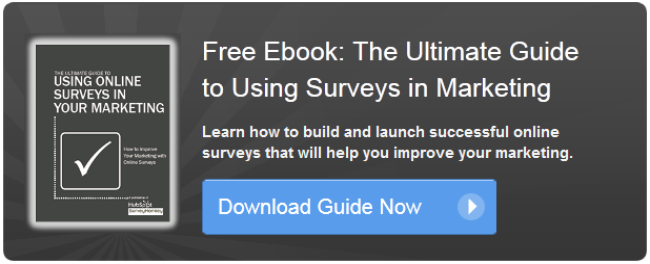







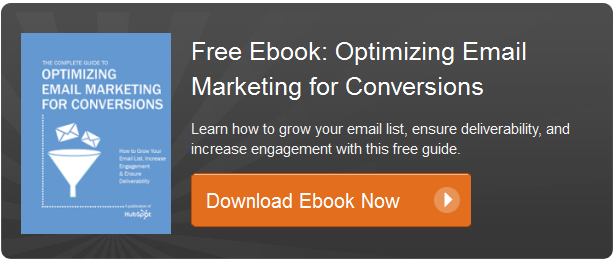















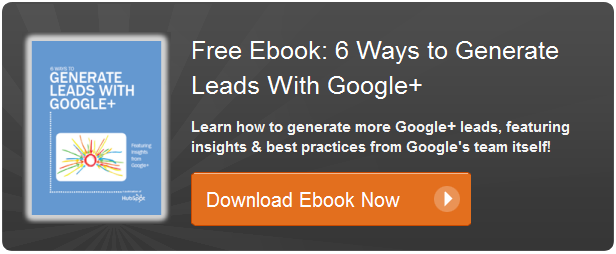







 In this blog post, we intentionally chose to feature screenshots of Apple’s website navigation, since Apple does a great job of directing its users to different places of its website through its navigation. Spend some time studying Apple’s navigation, and see if you can adopt some of the lessons you spot.
In this blog post, we intentionally chose to feature screenshots of Apple’s website navigation, since Apple does a great job of directing its users to different places of its website through its navigation. Spend some time studying Apple’s navigation, and see if you can adopt some of the lessons you spot.


 Generate a detailed picture of your target audience (what we call a
Generate a detailed picture of your target audience (what we call a 
 Almost every piece of content you create can be adapted, reused, modified, and republished in another format. Make a habit of finding multiple ways to package and distribute the same information in different formats. Here are a few ideas:
Almost every piece of content you create can be adapted, reused, modified, and republished in another format. Make a habit of finding multiple ways to package and distribute the same information in different formats. Here are a few ideas: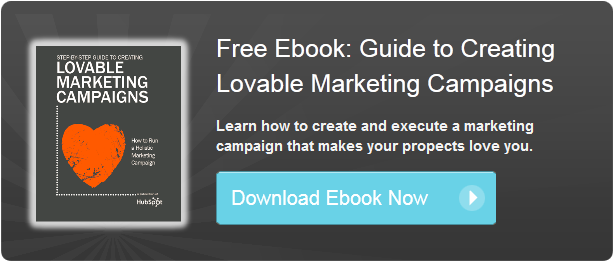



























-resized-600.JPG)

-resized-600.JPG)
-resized-600.JPG)
-resized-600.JPG)
.JPG)
-resized-600.JPG)
-resized-600.JPG)
-resized-600.JPG)
-resized-600.JPG)
-resized-600.JPG)
-resized-600.JPG)
-resized-600.JPG)
-resized-600.JPG)
-resized-600.JPG)
-resized-600.JPG)
-resized-600.JPG)
-resized-600.JPG)
-resized-600.JPG)

-resized-600.JPG)
-resized-600.JPG)
-resized-600.JPG)
-resized-600.JPG)
-resized-600.JPG)







